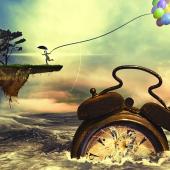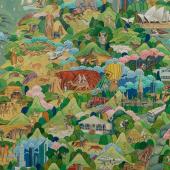Venice Biennale
From May 9th to November 22nd, it's that time again. Then the spotlight of attention in terms of contemporary art in Venice, the city of gondolas, pigeons and sewers shall be addressed. Since 1895 Venice is the Biennale´s location. This year, these two-yearly international art exhibition marks the 56th time.
56th Biennial: "All the World's Future"
For 89 of a total of 136 artists, it will be the first and hopefully not the last time that they exhibit their art at the Biennale in Venice. Under the title "All the World's Future" Venice shines in the light of contemporary art. Starting from the main venue, the public gardens "Giardini Publici" in the Castello district, scattered exhibitions and installations are located throughout the city. In the Giardini Publici 28 countries including Germany present their artists and their works in national pavilions. Additionally the arsenales, ancient shipyard with halls from the 16th century, are worth visiting as exhibition venues. A highlight of the prestigious art exhibition is the Golden Lion Award.
"Seismograph of current contemporary art"
It is the post-modern art that sets the tone at the Biennale with its various trends and tendencies. And yet the event, which by the media is often called as "seismograph of current contemporary art", more than an ordinary art exhibition. It's not just installations and canvases that take you into the world of the artist during a walk through the city.
Theater Meets Art Exhibition
Since 1934, the International Theatre Festival is a part of the Biennale, as well as the Festival of Music (since 1930) and of Film (1932). Decisive for the theater festival was the thought to perform classical works, that have their setting in Venice, here in front of the home crowd. It started appropriately enough with Shakespeare's "The Merchant of Venice".
Arts dominated by the criticism: Commotion at the 50th Biennale
In the past of the Biennale, the artist Santiago Sierra went down in history as a very important one. This caused a scandal at the 50th Biennale in 2003. The artist let brick up the main entrance of the completely empty Spanish pavilion. Visitors could only get in by possessing a Spanish passport. Sierra wanted to draw attention to the problematic handling of migration worldwide.
Surely only one example among many that illustrates how much expressiveness art carries in itself - far more than, let´s say, a few brushstrokes hypothesise at first glance.
Impressions from the Venice Biennale
Morceaux choisis... 👌#Biennale2017 pic.twitter.com/sRfVOOoJdV
— Wandrille Potez (@WandrillePotez) September 10, 2017



